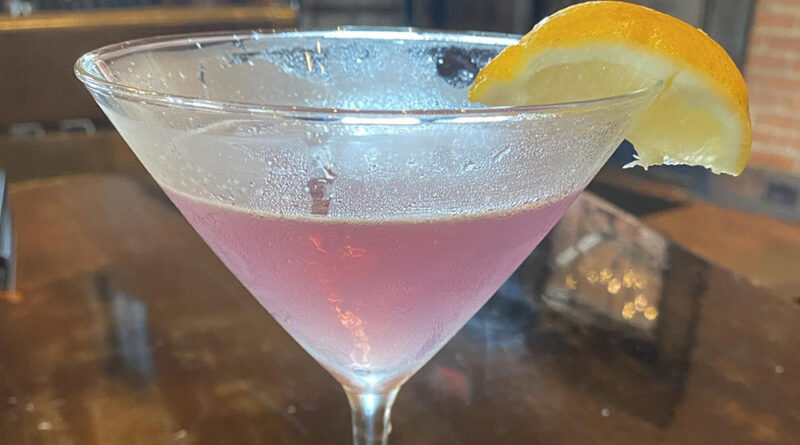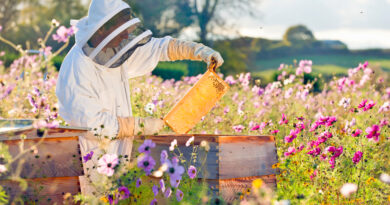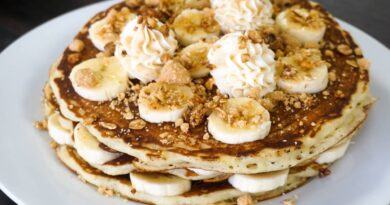Switch up your spirits
Try gin or use vodka in these classic cocktails
Story and photos by JANNA ZEPP
I am always surprised when I meet a fellow gin enthusiast. Most of my circle of friends and acquaintances hate gin. I presume their only experience with it has been the inexpensive gin classics often labeled as “well drinks” in restaurants and bars. Vodka, on the other hand, appears to be the prettiest girl at the prom. I have yet to meet anyone who hates vodka, which, coincidentally is called “potato gin” as it is made with — you guessed it — potatoes.
Americans have drunk and continue to drink more vodka than any other spirit since 1970, and 32 percent of the liquor market is vodka. The average American drinks nearly four shots of vodka per month. Russians and Eastern Europeans — vodkas homies — out-drink Americans at more than three times that amount at 17-20 vodka shots a month.
Vodka and gin are versatile spirits. The classic martini is made with gin and vermouth, but vodka elegantly steps in for the non-gin fans in the guise of the vodka martini. Vodka replaces gin often in time-honored traditional vodka/gin cocktails such as the Tom Collins (with gin) and the Vodka Collins (with vodka … obviously).
Vodka is defined by what it’s not. It’s designed to be flavorless (flavored vodkas notwithstanding), clear, and in all ways indistinct. Gin is a liquor with various amounts of juniper flavor and bottled at a minimum of 40% alcohol by volume.
Juniper, gin’s defining characteristic, tastes primarily like pine, but is also herbaceous and floral. Gin production dates back to the Dutch genever, a wine-based medicinal spirit. The English got a hold of genever during various wars in the 1600s, where it was referred to as “Dutch courage.”
Speaking of pine, a cousin of mine referred to the taste of gin as tippling, a pine-scented household cleaner until I introduced him to some right fine Texas-made gins. He’s still gin-shy, but he actually enjoyed my private cache of the juniper berry juice. I call that a gin win.
Legend holds that the traditional gin and tonic with a slice of lime was created by Field Marshal Horatio Herbert Kitchener, 1st Earl Kitchener. A British Army officer and colonial administrator, Lord Kitchner came to prominence for his imperial campaigns, his involvement in the Second Boer War, and his central role in the early part of the First World War.
It was while his lordship was in Egypt that Kitchner mixed tonic water and gin over ice and added a lime wedge for garnish. Tonic water contains quinine, a medication that treats malaria (spread by the bites of mosquitoes) caused by the parasite Plasmodium falciparum, which infects red blood cells. Quinine can kill the parasite or stop it from growing and can be used alone or with other malaria medications. The mixed libation made drinking the tonic water more palatable, and thus, a way to improve one’s health whilst ruining one’s health was created.
But let’s move on to what you really came to read about: cocktail recipes. And remember, you can always substitute vodka for the gin if you prefer.
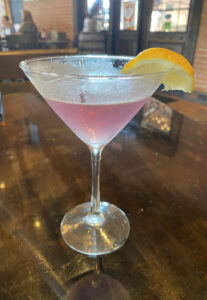 The Empress Gin Martini
The Empress Gin Martini
There are many versions of this cocktail. The Gin at Nolan Creek makes one that involves Empress Indigo gin, organic Amber 100% Blue Agave, lavender syrup, and a splash of lemonade. It is one of my favorite cocktails and I highly recommend you try it.
Here is a similar Empress Indigo Martini you can make at home.
Ingredients
Blueberries
Mint Leaves
Ice
Empress Indigo Gin (or vodka)
Lavender syrup
Organic Amber 100% Blue Agave
Lemon juice
Soda water or tonic water
Recommended tools
Cocktail muddle
Glass
Spoon
Make it: Place the blueberries and mint leaves in your glass and muddle them gently. Then, fill the glass with ice and add the Empress gin. Add an ounce of lavender syrup, Organic Amber 100% Blue Agave, and fresh lemon juice. Finally, top the glass off with the soda water. Garnish with fresh blueberries and a couple of mint leaves if you choose. Stir and enjoy.
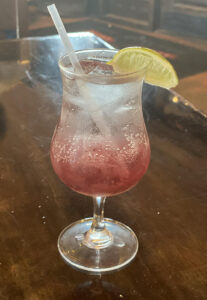 Lavender Blueberry Gin Sparkler
Lavender Blueberry Gin Sparkler
This is another favorite from the Gin at Nolan Creek. This recipe is similar to theirs and you ought to try it there first before making it on your own.
Ingredients
1 ½ ounces Gin(or vodka)
1 ½ ounces Lavender Simple Syrup
2 ounces Blueberry Juice
Squeeze of Lemon Juice
Soda Water for topping
Make it: In a 16-ounce highball glass filled with ice, add gin, lavender simple syrup, blueberry juice, and a squeeze of lemon juice. Stir to combine, then top with soda water. Mix thoroughly before enjoying.
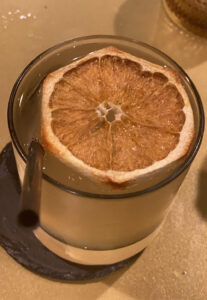 Bee’s Knees
Bee’s Knees
The Bee’s Knees is a Prohibition-era cocktail made with gin, lemon juice and honey. The name reflects the era in which the drink was born: The phrase “bee’s knees” meant “excellent or “outstanding” in the same vein as “the cat’s pajamas.”
Bar history credits Frank Meier, a mixologist at the Hôtel Ritz Paris during the 1920s, as the creator of this delicious cocktail. It’s a variation of the classic Gin Sour (gin, lemon, sugar) that uses honey syrup instead of sugar syrup. The honey creates a richer drink, and it may have been a way to hide the taste of homemade “bathtub” gin, which was what was available during Prohibition. The Blackbird Books & Spirits has this drink in a non-alcoholic version for those who want to enjoy the taste, but not the effects.
Ingredients
2 ounces gin(or vodka)
3/4 ounce lemon juice, freshly squeezed
1/2 ounce honey syrup
Garnish: lemon twist
Make it: Add the gin, lemon juice and honey syrup into a shaker with ice and shake until well-chilled. Strain into a chilled cocktail glass. Garnish with a lemon twist.
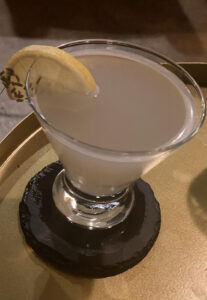 French Lavender 75
French Lavender 75
French 75 is a cocktail made from gin, champagne, lemon juice and sugar. It is also called a 75 Cocktail, or in French simply a Soixante Quinze (Seventy Five).
The drink goes back to World War I, and an early form was created in 1915 at the New York Bar in Paris — later Harry’s New York Bar — by barman Harry MacElhone. The cocktail had such a kick that those imbibing said it felt like being shelled with the powerful French 75mm field gun used during the conflict.
The addition of lavender syrup adds a sophisticated flavor finish to it, but beware: it will still get you bombed if you drink too much. Enjoy in moderation only. The Blackbird Books & Spirits also has this drink in a non-alcoholic version.
Ingredients
3/4 ounce gin (or vodka)
1/2 ounce Lavender Syrup
1/2 ounce fresh lemon juice
Top with: 6 ounces rosé champagne
Glass: Champagne coupe/flute or martini glass
Glass Size: 9 ounces
Garnish: lemon twist, lavender sprig
Make it: Chill serving glass. Place ingredients into bottom of mixing glass and muddle. Fill mixing glass 2/3 full of ice and pour remaining ingredients in order listed. Cap, shake and strain into chilled serving glass. Add garnish and serve.
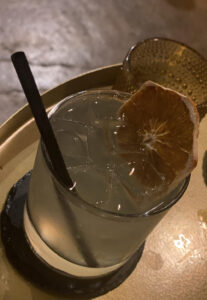 The South Side
The South Side
Mixologists differ on exactly what The South Side is. It has been described as a Gimlet with mint that’s served up in a cocktail glass. Others have said it’s a gin-based Mint Julep served over ice. Whether it was named for the South Side neighborhood in Chicago or invented at Southside Sportsmen’s Club on Long Island, the cocktail and its refreshing combination of gin, citrus, sugar and mint is a tasty speakeasy concoction worth sampling. The Blackbird Books & Spirits also has this drink in a non-alcoholic version.
The South Side first appeared in print in 1916, in Huge Enslinn’s book “Recipes for Mixed Drinks” as the South Side Fizz. His recipe included gin, lemon and lime juices, sugar, mint and club soda. Ditch the sodas and subtract one of the citrus fruits, and you get the 21st Century South Side.
Ingredients
5 mint leaves
1 ounce lemon juice, freshly squeezed
2 ounces gin (or vodka)
1 ounce simple syrup
Garnish: mint sprig
Make it: Add the mint leaves and lemon juice into a shaker and gently muddle. Add the gin and simple syrup with ice, and shake until well-chilled. Double-strain into a chilled cocktail glass. Garnish with a mint sprig.
Let me know what you think at janna.zepp@gmail.com. I look forward to hearing from you.

